-
 Bitcoin
Bitcoin $105,564.0464
0.23% -
 Ethereum
Ethereum $2,532.7861
-0.95% -
 Tether USDt
Tether USDt $1.0005
0.00% -
 XRP
XRP $2.1504
-0.10% -
 BNB
BNB $647.9477
-0.64% -
 Solana
Solana $145.7444
-0.88% -
 USDC
USDC $0.9999
0.01% -
 Dogecoin
Dogecoin $0.1778
-0.04% -
 TRON
TRON $0.2718
0.14% -
 Cardano
Cardano $0.6284
-1.25% -
 Hyperliquid
Hyperliquid $40.5452
-3.15% -
 Sui
Sui $2.9851
-1.60% -
 Chainlink
Chainlink $13.2472
-0.45% -
 Bitcoin Cash
Bitcoin Cash $437.5258
-1.68% -
 UNUS SED LEO
UNUS SED LEO $9.1153
0.92% -
 Stellar
Stellar $0.2577
-0.77% -
 Avalanche
Avalanche $18.9603
-1.59% -
 Toncoin
Toncoin $2.9625
-1.72% -
 Shiba Inu
Shiba Inu $0.0...01211
-0.08% -
 Litecoin
Litecoin $85.7512
-0.61% -
 Hedera
Hedera $0.1540
-2.92% -
 Polkadot
Polkadot $3.7877
-0.71% -
 Ethena USDe
Ethena USDe $1.0004
-0.01% -
 Monero
Monero $314.6226
1.31% -
 Dai
Dai $1.0000
0.00% -
 Bitget Token
Bitget Token $4.5216
-0.55% -
 Pepe
Pepe $0.0...01105
-1.09% -
 Uniswap
Uniswap $7.3637
-2.47% -
 Pi
Pi $0.6184
6.26% -
 Aave
Aave $275.1479
-4.78%
Is the gap support effective? Three situations must be distinguished!
In crypto trading, gap support helps identify potential price levels where untested gaps may act as support, guiding entry and exit decisions.
Jun 12, 2025 at 07:49 am
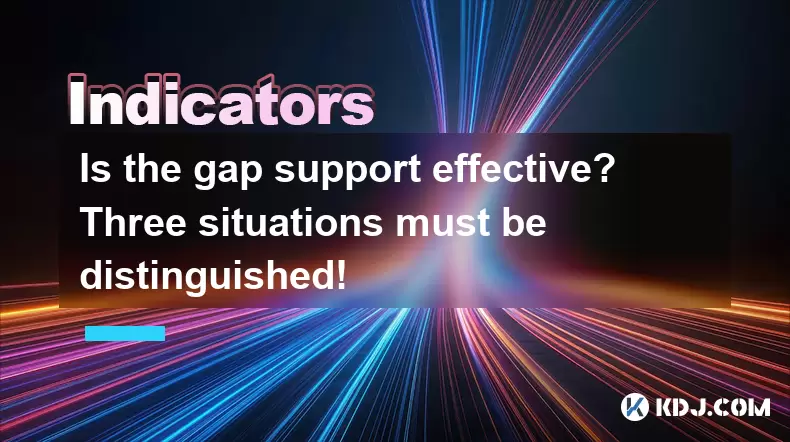
Understanding the Concept of Gap Support in Cryptocurrency Trading
In cryptocurrency trading, gap support refers to a technical analysis concept where traders identify price gaps on candlestick charts and assess whether these gaps act as support levels. A gap occurs when the price of an asset jumps from one level to another without any trading happening in between. This phenomenon is common in volatile markets like cryptocurrencies due to overnight or weekend trading halts, news events, or sudden market sentiment shifts.
When analyzing gap support, traders often look for patterns that suggest whether the gap will hold as a support area or if it will be filled (i.e., the price returns to its previous level before the gap occurred). Understanding this behavior can help traders make informed decisions about entry points, stop-loss placements, and profit targets.
Situation One: Gaps Occurring During Uptrends
One of the key situations where gap support may come into play is during strong uptrends. In such cases, prices often surge rapidly, creating upward gaps. These gaps are typically seen as areas of potential support because they represent untested price zones that buyers have skipped over in their eagerness to purchase.
Traders who recognize this pattern might place buy orders near the gap level, anticipating that the price will find support there and continue its upward trajectory. However, caution is necessary since not all gaps in uptrends behave the same way. Some gaps may get filled quickly if the momentum weakens or if profit-taking sets in.
- Identify the gap location by examining daily or hourly candlestick charts.
- Analyze volume around the gap — high volume suggests stronger buyer conviction.
- Observe subsequent price action after the gap forms; if the price revisits the gap but bounces off it, it confirms support.
Situation Two: Gaps Forming in Downtrends
Conversely, in downtrends, gaps tend to form downward, indicating strong selling pressure. These gaps are often interpreted as resistance zones rather than support. The logic here is that sellers have pushed the price down so aggressively that no buyers were willing to step in at those lower levels.
However, some traders believe that once the downtrend begins to lose steam, these gaps can turn into support levels. For instance, if the price retraces back to a previously broken gap and starts to stabilize, it could signal a potential reversal or consolidation phase.
- Locate the gap zone using historical chart data.
- Monitor for bullish candlestick formations near the gap, which may indicate buying interest.
- Use moving averages or trendlines to confirm whether the downtrend is weakening.
Situation Three: Gaps Around Major News Events
News-driven gaps are among the most unpredictable types of gaps in cryptocurrency trading. These occur when major announcements, regulatory changes, or macroeconomic events cause sudden spikes or drops in price. Because these gaps are often based on emotional reactions rather than gradual market consensus, their reliability as support levels can be questionable.
Despite this volatility, experienced traders sometimes use these gaps strategically. If a significant news event causes a sharp move upwards followed by a pullback to the gap area, it might offer a second chance to enter a trade with tighter risk parameters.
- Verify the nature of the news — was it positive, negative, or neutral?
- Assess post-gap volume and price movement to gauge whether the initial reaction was sustainable.
- Set stop-loss orders below the gap level if entering a long position, or above if shorting.
Technical Indicators That Complement Gap Support Analysis
To enhance the effectiveness of gap support analysis, traders often combine it with other technical indicators. Tools like the Relative Strength Index (RSI), Moving Average Convergence Divergence (MACD), and Bollinger Bands can provide additional context regarding overbought or oversold conditions, trend strength, and volatility.
For example, if a gap appears in an overbought RSI environment, it might suggest that the rally is exhausted, making the gap less likely to act as support. Conversely, if the MACD line crosses above the signal line after a gap forms, it could reinforce the idea that the gap will hold.
- Overlay RSI to check for divergences or extreme readings near the gap area.
- Use MACD crossovers to confirm trend continuation or reversal signals.
- Apply Fibonacci retracement levels to see if they align with the gap zone.
Frequently Asked Questions
Q1: Can gap support work effectively in sideways or ranging markets?
While gaps can still appear in range-bound markets, their significance as support levels tends to be weaker. In such environments, price typically oscillates within defined boundaries, and gaps may not carry the same weight as they do in trending scenarios. Traders should consider additional confirmation tools before relying solely on gap support in sideways markets.
Q2: How do I differentiate between a true gap and a regular price jump?
A true gap occurs when there's a visible empty space between two consecutive candles or bars on a chart, meaning no trading took place in that price range. A regular price jump, on the other hand, may look similar but is usually filled almost immediately. Using higher timeframes like daily or weekly charts can help distinguish real gaps from temporary price spikes.
Q3: Should I always wait for the price to retest the gap before entering a trade?
Not necessarily. While waiting for a retest can reduce false signals, it may also cause you to miss early entries in fast-moving markets. Some traders prefer to enter immediately after confirming the presence of a gap and supporting factors like volume and momentum. It’s essential to test different approaches through backtesting and demo accounts to determine what works best for your strategy.
Q4: Are gap supports more reliable in certain cryptocurrencies compared to others?
The reliability of gap support depends largely on liquidity and volatility rather than the specific cryptocurrency. High-volume assets like Bitcoin and Ethereum tend to exhibit clearer and more predictable gap behaviors due to their deeper order books and broader market participation. Less liquid altcoins may experience erratic gaps that are harder to interpret and trade effectively.
Disclaimer:info@kdj.com
The information provided is not trading advice. kdj.com does not assume any responsibility for any investments made based on the information provided in this article. Cryptocurrencies are highly volatile and it is highly recommended that you invest with caution after thorough research!
If you believe that the content used on this website infringes your copyright, please contact us immediately (info@kdj.com) and we will delete it promptly.
- PayPal's PYUSD Stablecoin Investigated by the SEC, But No Enforcement Action Is Being Sought
- 2025-06-15 11:25:12
- Turbo (TURBO) Price Prediction 2025-2030: Can Turbo Rocket Upwards Once Again and Deliver a New All-Time High?
- 2025-06-15 11:25:12
- Eric Trump Says Banks Will Need to Utilize Blockchain Technology if They Want to Survive the Next Decade
- 2025-06-15 11:20:12
- Cardano [ADA] Surpasses Ethereum [ETH] in Developer Activity, Signaling a Potential Shift in the Competitive Landscape of Blockchain Platforms.
- 2025-06-15 11:20:12
- The Intersection of Artificial Intelligence and Crypto Is Heating Up, and May 2025 Is Shaping Up to Be a Pivotal Month for Some of the Sector's Most Promising Tokens
- 2025-06-15 11:15:11
- Bybit Launches 1V1 Trading Arena, Gamifying Trading Experience for Crypto Pros and Beginners
- 2025-06-15 11:15:11
Related knowledge
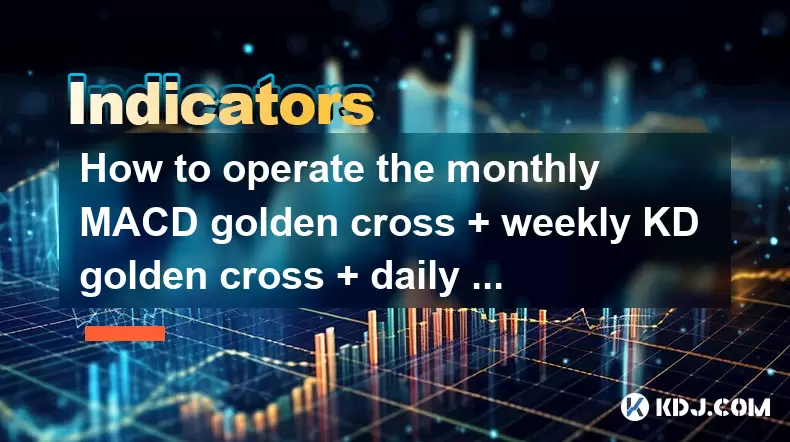
How to operate the monthly MACD golden cross + weekly KD golden cross + daily volume breakthrough?
Jun 15,2025 at 05:36am
Understanding the Strategy: Monthly MACD Golden CrossTo effectively operate the monthly MACD golden cross, traders must first understand what this signal entails. The MACD (Moving Average Convergence Divergence) golden cross occurs when the MACD line crosses above the signal line on a given chart timeframe. When this happens on the monthly chart, it sug...
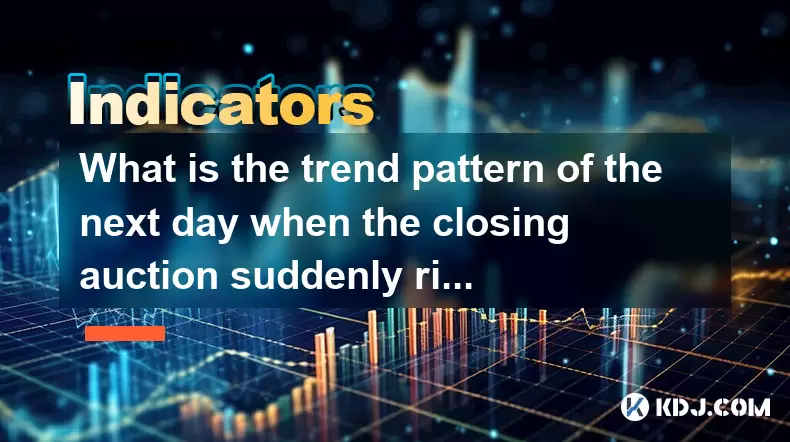
What is the trend pattern of the next day when the closing auction suddenly rises?
Jun 15,2025 at 08:15am
Understanding Closing Auctions in Cryptocurrency MarketsIn the context of cryptocurrency trading, a closing auction refers to a mechanism used by exchanges to determine the closing price of an asset at the end of a trading session. This process typically occurs within a short time window before the market closes for the day and aims to provide a fair an...

What does it mean when the volume fluctuates during the sideways trading at high levels?
Jun 15,2025 at 10:28am
Understanding Volume Fluctuations in Sideways TradingWhen volume fluctuates during sideways trading at high levels, it refers to the changes in the number of assets traded over a given period while the price remains relatively stable, moving within a defined range. This phenomenon typically occurs when the market lacks a clear directional bias—neither b...
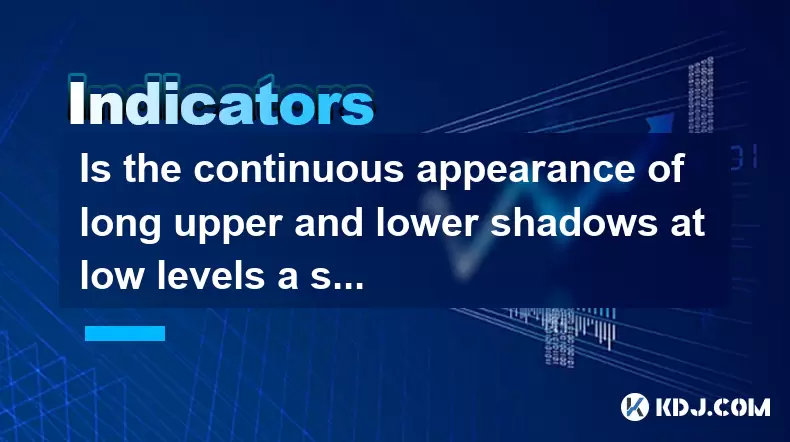
Is the continuous appearance of long upper and lower shadows at low levels a signal of accumulation?
Jun 15,2025 at 01:43am
Understanding Long Upper and Lower Shadows in Candlestick ChartsIn the world of cryptocurrency trading, candlestick patterns are widely used to analyze price movements. A long upper shadow, also known as a wick or tail, indicates that the price rose significantly during the period but was pushed back down by selling pressure. Conversely, a long lower sh...
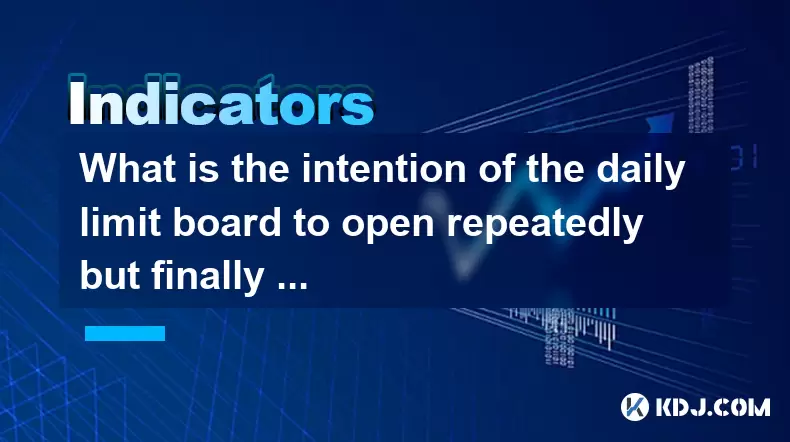
What is the intention of the daily limit board to open repeatedly but finally close?
Jun 15,2025 at 01:08am
Understanding the Daily Limit Board in Cryptocurrency TradingIn cryptocurrency trading, a daily limit board refers to a price movement restriction mechanism applied by certain exchanges or regulatory bodies. This mechanism is primarily used to prevent extreme volatility and panic selling or buying during periods of intense market fluctuation. When an as...

How to calculate the probability of trend continuation after the MACD column divergence?
Jun 14,2025 at 08:01am
Understanding MACD Column DivergenceThe Moving Average Convergence Divergence (MACD) is a widely used technical indicator in cryptocurrency trading. The MACD column, also known as the histogram, represents the difference between the MACD line and the signal line. When price makes a new high or low but the MACD histogram does not confirm this movement, a...

How to operate the monthly MACD golden cross + weekly KD golden cross + daily volume breakthrough?
Jun 15,2025 at 05:36am
Understanding the Strategy: Monthly MACD Golden CrossTo effectively operate the monthly MACD golden cross, traders must first understand what this signal entails. The MACD (Moving Average Convergence Divergence) golden cross occurs when the MACD line crosses above the signal line on a given chart timeframe. When this happens on the monthly chart, it sug...

What is the trend pattern of the next day when the closing auction suddenly rises?
Jun 15,2025 at 08:15am
Understanding Closing Auctions in Cryptocurrency MarketsIn the context of cryptocurrency trading, a closing auction refers to a mechanism used by exchanges to determine the closing price of an asset at the end of a trading session. This process typically occurs within a short time window before the market closes for the day and aims to provide a fair an...

What does it mean when the volume fluctuates during the sideways trading at high levels?
Jun 15,2025 at 10:28am
Understanding Volume Fluctuations in Sideways TradingWhen volume fluctuates during sideways trading at high levels, it refers to the changes in the number of assets traded over a given period while the price remains relatively stable, moving within a defined range. This phenomenon typically occurs when the market lacks a clear directional bias—neither b...

Is the continuous appearance of long upper and lower shadows at low levels a signal of accumulation?
Jun 15,2025 at 01:43am
Understanding Long Upper and Lower Shadows in Candlestick ChartsIn the world of cryptocurrency trading, candlestick patterns are widely used to analyze price movements. A long upper shadow, also known as a wick or tail, indicates that the price rose significantly during the period but was pushed back down by selling pressure. Conversely, a long lower sh...

What is the intention of the daily limit board to open repeatedly but finally close?
Jun 15,2025 at 01:08am
Understanding the Daily Limit Board in Cryptocurrency TradingIn cryptocurrency trading, a daily limit board refers to a price movement restriction mechanism applied by certain exchanges or regulatory bodies. This mechanism is primarily used to prevent extreme volatility and panic selling or buying during periods of intense market fluctuation. When an as...

How to calculate the probability of trend continuation after the MACD column divergence?
Jun 14,2025 at 08:01am
Understanding MACD Column DivergenceThe Moving Average Convergence Divergence (MACD) is a widely used technical indicator in cryptocurrency trading. The MACD column, also known as the histogram, represents the difference between the MACD line and the signal line. When price makes a new high or low but the MACD histogram does not confirm this movement, a...
See all articles

























































































